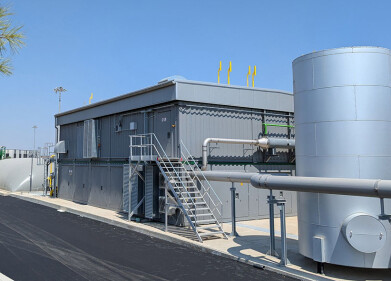Air clean up
Are Train Stations a Pollution Hotspot?
Jul 12 2019
Major train stations in both the English and Scottish capitals are in danger of suffering heavily polluted air due to the high number of diesel trains passing through them, according to a new study based upon independent research conducted by Edinburgh University and Kings College London.
The research has revealed that concentrations of nitrogen dioxide (NO2) inside both Waverley Station in Edinburgh and King’s Cross in Edinburgh exceeded EU thresholds within just two weeks this year. That spells worrying news for millions of Britons who use the rail network on a daily basis to get to and from their place of work.
Alarming news
Advances in local air quality monitoring brings both benefits and challenges. On the one hand, scientists, citizens and policymakers can gain a better overview of the situation, thus allowing them to devise a plan for improving air quality and adjusting their daily commutes to avoid pollution hotspots. On the other hand, it draws attention to how the current way of doing things is falling severely short when it comes to reducing pollution and protecting our lungs.
NO2 was the contaminant which caused the most concern following this particular study, due to the expediency with which it broke EU limits and the harmful effects it can have on the human body. As well as provoking general irritation in the eyes, nose and throat, NO2 can also lead to more serious respiratory problems such as asthma or difficulty breathing. The study also found that particulate matter 2.5 (PM2.5) levels were higher inside the station than out, though these remained within legal limits.
Diesel to blame
The research concluded there was a “strong positive association” between elevated diesel emissions and high levels of NO2. Though diesel has become something of a hot potato among the environmental scientific community, most of the technological advances have focused on dealing with road traffic. However, this research suggests that trains are responsible for NO2 concentrations the same as (if not worse) than that experienced at a busy urban thoroughfare.
It’s not the first time that concerns have been raised about air quality inside train stations, largely because of the high number of diesel trains that pass through them and the fact that many of them have overhead roofing to protect from the elements. However, this is one of the first studies which provides conclusive proof of the damage they are wreaking.
Edinburgh worse off than London
Since all intercity services in London now use electric trains and those in Edinburgh still rely on diesel, the picture is more concerning north of the border. Thankfully, the East Coast services which pass through both stations are now largely electric (apart from a handful of high-speed diesel trains), while King’s Cross also experiences much diesel-powered open access traffic.
“Rail is the greenest way of moving people and goods in large numbers, but there is still much more we can do as an industry,” said Network Rail in a statement. “We recognise diesel exhaust emissions as an emerging issue at some of our managed stations and have commissioned research to improve our understanding, and inform the actions we are already taking and intend to take in future.”
Events
Aug 24 2025 Stockholm, Sweden and online
Aug 27 2025 Busan, South Korea
Sep 02 2025 Mexico City, Mexico
Sep 02 2025 Mexico City, Mexico
Sep 09 2025 Moscow, Russia







.jpg)






